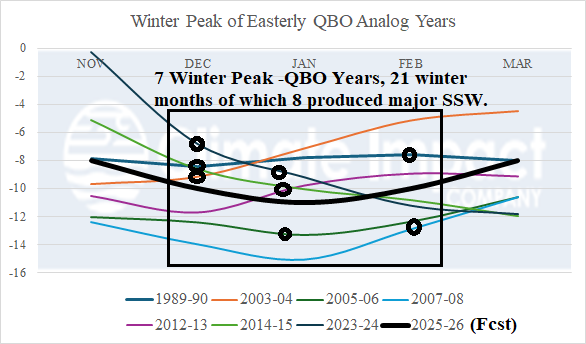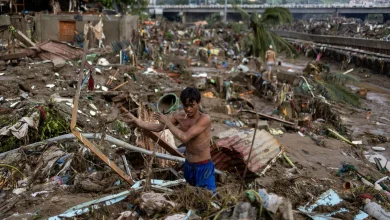Recent Winter Easterly QBO and Stratospheric Warming Events

Climate Impact Company Daily Feature
Issued: Tuesday, November 4, 2025
Highlight: Comments on stratospheric warming episodes during Easterly quasi-biennial oscillation.
Fig. 1: The NOAA/CPC Seasonal Drought Outlook valid to January 2026.
Discussion: Generally, sudden stratospheric warming (SSW) events capable of producing arctic outbreaks are considered more likely during easterly phase of the quasi-biennial oscillation (-QBO). Past winter seasons when -QBO was developing in November, similar with 2025, and peaking during the winter season, similar with winter 2025-26 expectation, are identified (since 1979). A total of 7 analog years is presented. There are 21 months of meteorological winter for the 7 analog years. Of the 21 months, month-long significant SSW events were observed, 3 in December and January, and 2 in February. The January episodes were observed in 2024, 2015, and 2006. The stratospheric temperature anomalies for the 3 analog years identify a classic stratospheric warming across the polar region (Fig. 2). However, note that the attendant arctic air mass was generated is Russia while North America was warm (Fig. 3). Stratospheric warming events DO NOT always produce hemispheric arctic air masses. Natural gas traders are particularly interested in stratospheric warming events due to their potential to produce DISASTER cold across high population areas. One famous episode occurred in December 1989 when a stratospheric warming event was centered over Quebec (Fig. 4), not the polar region, and caused record cold across most of the Central and East U.S. (Fig. 5).
Fig. 2-3: Recent months of January with stratospheric warming events taking place and the attendant average surface temperature.
Fig. 4-5: Stratospheric warming focused on Quebec during December 1989 and the attendant arctic air mass across the Central and East U.S.





